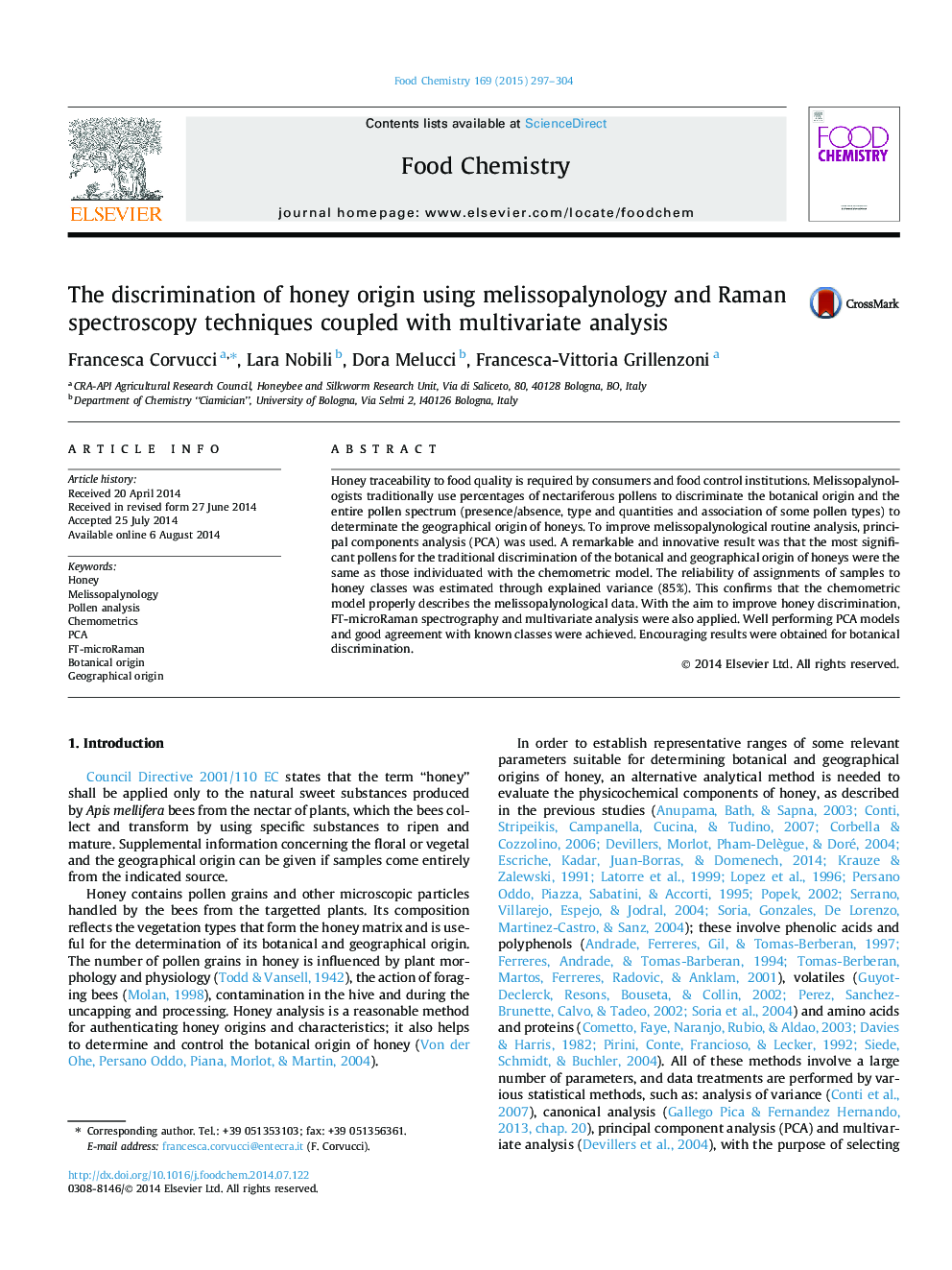| Article ID | Journal | Published Year | Pages | File Type |
|---|---|---|---|---|
| 7594831 | Food Chemistry | 2015 | 8 Pages |
Abstract
Honey traceability to food quality is required by consumers and food control institutions. Melissopalynologists traditionally use percentages of nectariferous pollens to discriminate the botanical origin and the entire pollen spectrum (presence/absence, type and quantities and association of some pollen types) to determinate the geographical origin of honeys. To improve melissopalynological routine analysis, principal components analysis (PCA) was used. A remarkable and innovative result was that the most significant pollens for the traditional discrimination of the botanical and geographical origin of honeys were the same as those individuated with the chemometric model. The reliability of assignments of samples to honey classes was estimated through explained variance (85%). This confirms that the chemometric model properly describes the melissopalynological data. With the aim to improve honey discrimination, FT-microRaman spectrography and multivariate analysis were also applied. Well performing PCA models and good agreement with known classes were achieved. Encouraging results were obtained for botanical discrimination.
Related Topics
Physical Sciences and Engineering
Chemistry
Analytical Chemistry
Authors
Francesca Corvucci, Lara Nobili, Dora Melucci, Francesca-Vittoria Grillenzoni,
